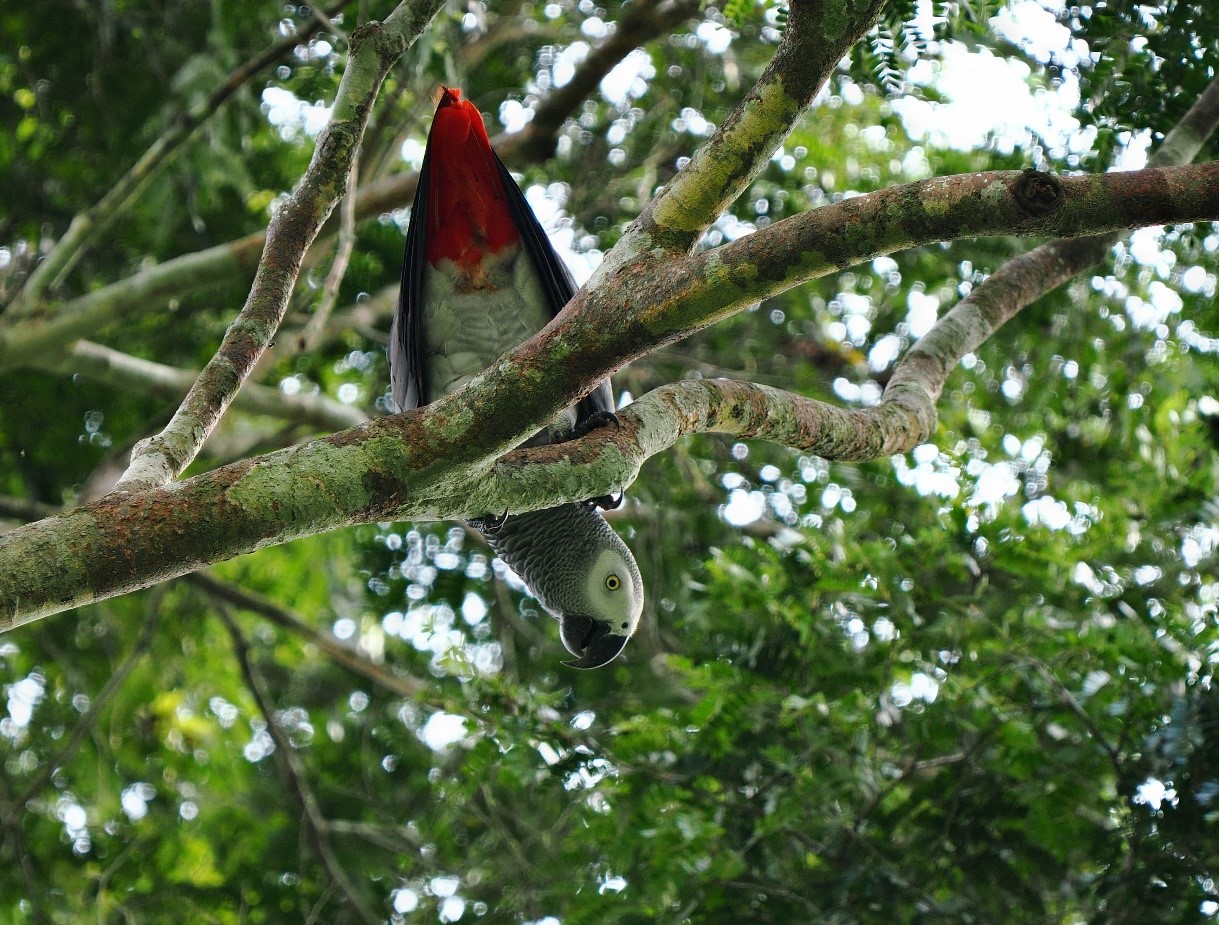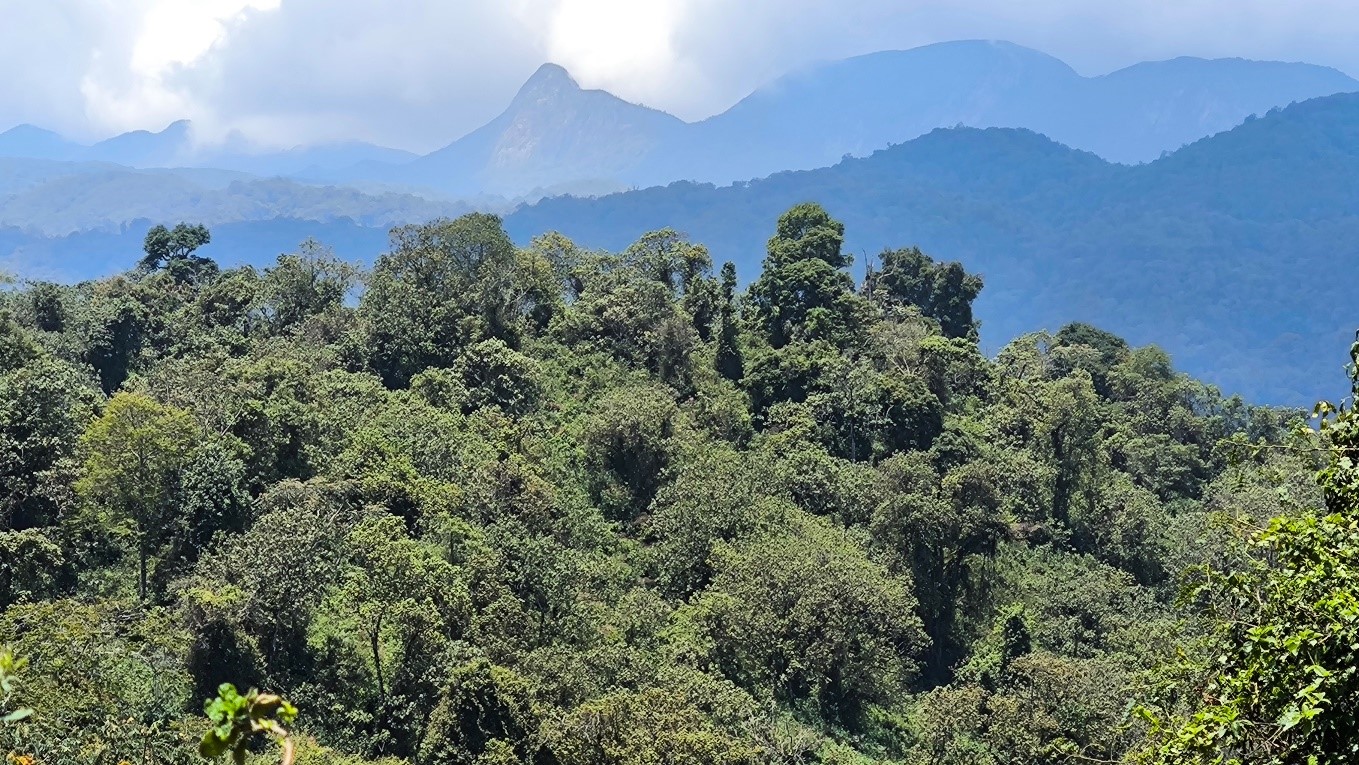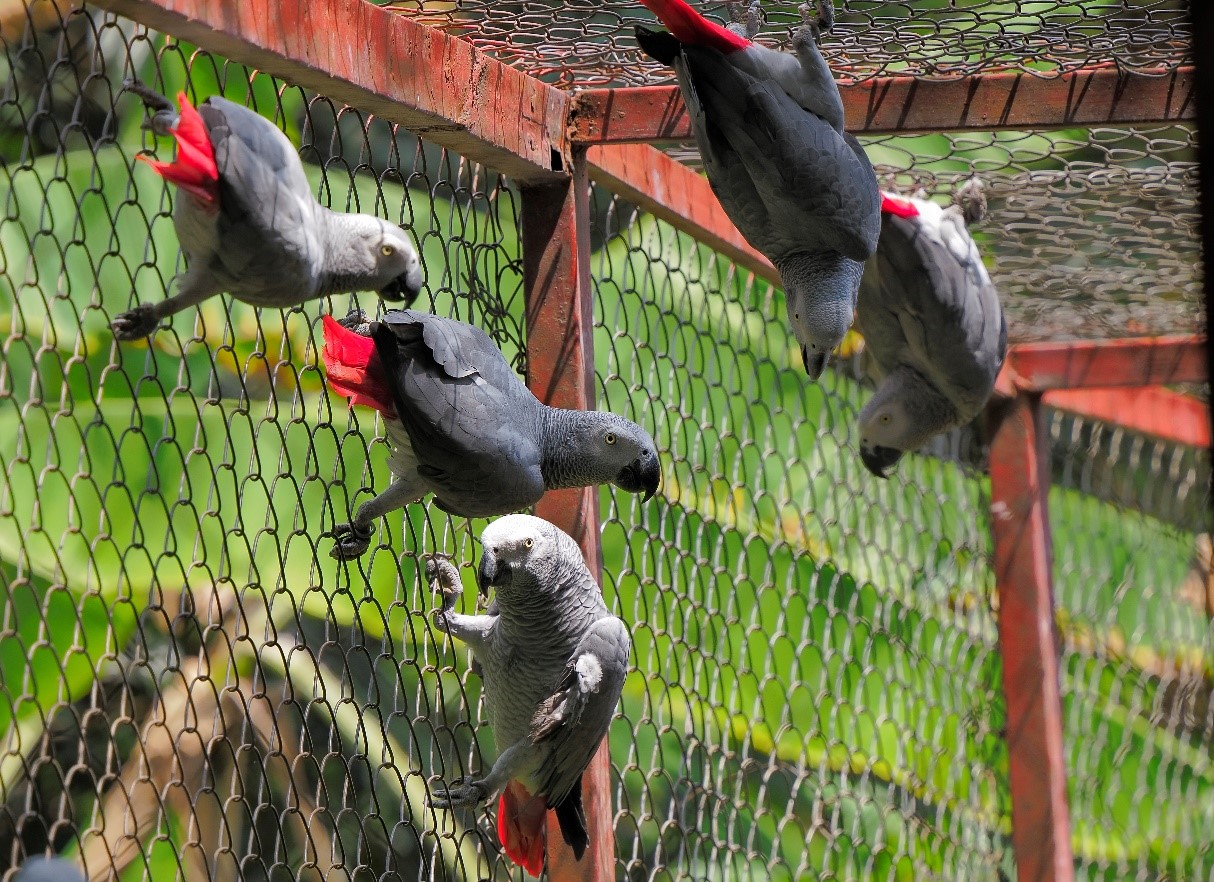La Estación Biológica de Doñana se adentra en el Congo para investigar el estado de las poblaciones de loro gris de cola roja, en peligro de extinción

Loro gris de cola roja en el Parque Nacional de la Lomami. Foto: José L. Tella
Las selvas de la República Democrática del Congo, a pesar de su gran biodiversidad, son una de las regiones menos exploradas del mundo. Debido a su inaccesibilidad geográfica, su inestabilidad política y su falta de infraestructuras adecuadas, muchas de estas vastas áreas siguen siendo en gran parte desconocidas para la ciencia. Un equipo científico liderado por la Estación Biológica de Doñana - CSIC y el Centre de Recherche en Sciences Naturelles se ha adentrado en las selvas de la República Democrática del Congo para estudiar el estado de las poblaciones del loro gris de cola roja (Psittacus erithacus), una especie catalogada por la UICN como “en peligro” a nivel global desde 2016.
Pedro Romero Vidal y José Luis Tella, de la Estación Biológica de Doñana, son dos de los investigadores que han liderado esta expedición. Hasta ahora, sus estudios sobre poblaciones salvajes de loros se habían centrado especialmente en América central y del Sur. También habían realizado algunas investigaciones en Asia, Australia y África, aunque nunca antes se habían adentrado en el Congo. Los investigadores han contado con la colaboración de Luis Flores, del Centre de Recherche en Sciences Naturelles, centro de investigación ubicado en Bukavu, en la República Democrática del Congo.

El principal objetivo de la expedición ha sido investigar el estado de las poblaciones del loro gris de cola roja (Psittacus erithacus) en estas regiones poco estudiadas. Esta especie se encuentra catalogada como amenazada globalmente de extinción desde 2016 debido principalmente a las intensas capturas ejercidas durante décadas para abastecer los mercados internacionales de aves de jaula y mascotas. Las prospecciones se han centrado principalmente en los extensos parques nacionales de la Lomami y Kahuzi-Biega, pero han abarcado también algunas de las áreas de distribución limítrofes de la especie tanto en República Democrática del Congo, como en Ruanda y Uganda.
“Los censos realizados indican que las poblaciones de esta especie presentan densidades extremadamente bajas, y que incluso ha desaparecido en amplias áreas de distribución, incluyendo espacios naturales protegidos”, explica José Luis Tella, investigador que inició hace más de 15 años esta línea de investigación con poblaciones de loros de distintos lugares del mundo.
El equipo científico ha podido constatar que persisten las capturas ilegales destinadas al comercio internacional, con frecuentes incautaciones de decenas de individuos que son atendidos veterinariamente para su posterior liberación en el centro de recuperación de fauna de Lwiro. Existe, además, una importante deforestación para la obtención de carbón, usado como principal fuente energética para cocinar del país, fuera de las áreas protegidas.

“La deforestación y la caza, principalmente para suministrar alimento tanto local como a los mercados de las grandes ciudades, suponen fuertes amenazas para una elevada biodiversidad cuya magnitud permanece todavía desconocida”, asegura Pedro Vidal Cordero. “De hecho, esta expedición ha permitido registrar la presencia de unas 500 especies de aves y 40 de mamíferos. Sorprendentemente, la presencia de decenas de ellas era hasta ahora desconocida en esta amplia e inexplorada región de África central.”
A partir de esta expedición, se plantea seguir investigando los efectos de la caza y de la destrucción de la selva sobre la biodiversidad en el país y el estado de conservación del loro gris en toda su área de distribución en África central.
La expedición ha sido financiada por Fundación Psittacus, contando con el apoyo del Plan Propio de cooperación de la Universidad Pablo de Olavide, dirigido por Martina Carrete, y supone el primer paso dentro de un convenio de colaboración científica de cinco años establecido entre el CSIC y el CRNS-LWIRO.